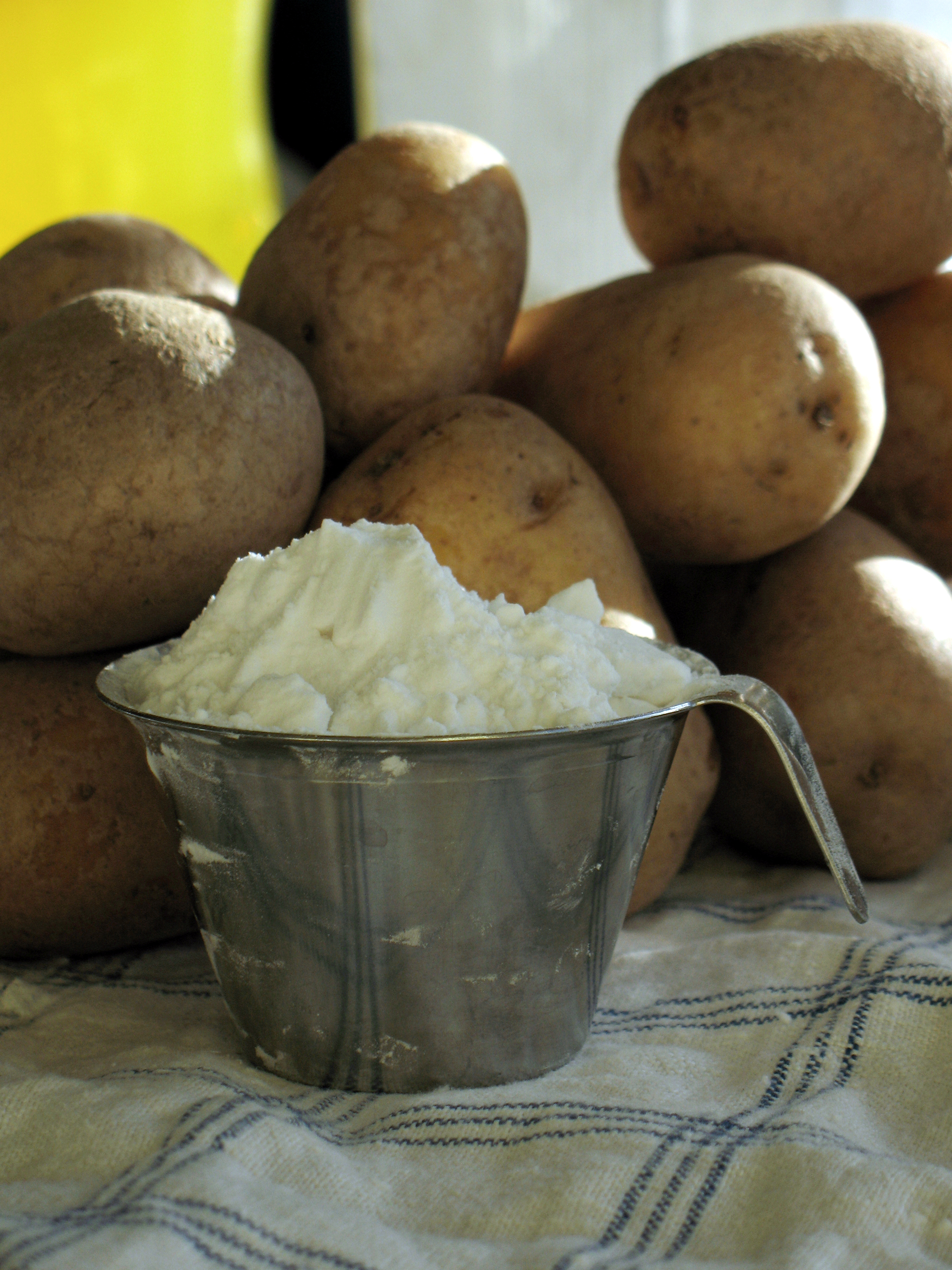|
Egg Alternative
Egg substitutes are food products which can be used to replace eggs in cooking and baking. Common reasons a cook may choose to use an egg substitute instead of egg(s) include having an egg allergy, adhering to a vegan diet or a vegetarian diet of a type that omits eggs, having concerns about the level of animal welfare or environmental burden associated with egg farming, or worries about potential Salmonella contamination when using raw eggs. There is a growing movement to address some of these concerns via third-party certifications, but because many labels in the industry remain confusing or intentionally misleading, some consumers distrust them and may use egg substitutes instead. Types Commercial There are many commercial substitutes on the market today for people who wish to avoid eggs. Most of these products are devoid of all animal products, and thus are vegan and contain no cholesterol. * The EVERY Company, a venture-backed company, produces bioidentical egg whites th ... [...More Info...] [...Related Items...] OR: [Wikipedia] [Google] [Baidu] |
Potato Starch
Potato starch is starch extracted from potatoes. The cells of the root tubers of the potato plant contain leucoplasts (starch grains). To extract the starch, the potatoes are crushed, and the starch grains are released from the destroyed cells. The starch is then left to settle out of solution or separated by Hydrocyclone, hydrocyclones, then dried to powder. Potato starch contains typical large oval spherical granules ranging in size from 5 to 100 Micrometre, μm. Potato starch is a refined starch, containing minimal protein or fat. This gives the powder a clear white colour, and the cooked starch typical characteristics of neutral taste, good clarity, high binding strength, long texture, and minimal tendency to foaming or yellowing of the solution. Potato starch contains approximately 800 Parts per million, ppm phosphate bound to the starch; this increases the viscosity and gives the solution a slightly anionic character, a low starch gelatinization, gelatinisation temperat ... [...More Info...] [...Related Items...] OR: [Wikipedia] [Google] [Baidu] |
Chickpea Flour
Besan or gram flour is a pulse flour made from chana dal or chickpea flour (split Bengal gram) or brown/ ''kaala chana'', a chickpea. It is a staple ingredient in the cuisines of the Indian subcontinent, including Indian, Bangladeshi, Burmese, Nepali, Pakistani, Sri Lankan, Caribbean, and Lunigiana cuisines. Characteristics Gram flour contains a high proportion of carbohydrates, higher fiber relative to other flours, no gluten, and a higher proportion of protein than other flours. Dishes The Indian Subcontinent and the Caribbean Gram flour is in popular use in the Indian subcontinent and the Caribbean, where it is used to make the following: In Andhra Pradesh, it is used in a curry with gram flour cakes called Senaga Pindi Kura () and is eaten with Chapati or Puri, mostly during winter for breakfast. Chila (or chilla), a pancake made with gram flour batter, is a popular street food in India. Southeast and East Asia Gram flour, which is called ''pe hmont'' (ပဲမ ... [...More Info...] [...Related Items...] OR: [Wikipedia] [Google] [Baidu] |
Ganmodoki
is a fried tofu fritter made with vegetables, such as carrots, lotus roots and burdock. It may also contain egg. ''Ganmodoki'' means ''pseudo-goose'' ( + ). This is because ganmodoki is said to taste like goose; compare mock turtle soup. ''Ganmodoki'' is also called ''ganmo'' for short. In the Edo period, ''ganmodoki'' was a stir-fried konjac dish. A dish similar to the ganmodoki today was made by wrapping chopped up vegetables in tofu (much like a manjū) and deep frying it. In Western Japan, Ganmodoki is called ''hiryōzu'', ''hiryuzu'' or ''hirōsu'', from the Japanese words of Portuguese origin, Portuguese word ''filhós'' or Spanish ''fillos (dish), fillos''. Gallery File:Ganmodoki 1 by kina3.jpg, Ganmodoki (right) See also * Oden * List of tofu dishes * References External links ganmodoki-or-hiryouzu-japanese-tofu-fritters {{Japan-cuisine-stub Deep fried foods of Japan Tofu dishes ... [...More Info...] [...Related Items...] OR: [Wikipedia] [Google] [Baidu] |
Egg Beaters
Egg Beaters is a product marketed in the United States as a healthy substituteEggbeaters website-Health Benefits Accessed January 22, 2011 for whole eggs. It is a substitute for whole/fresh eggs (from the shell) that contains less cholesterol, but it is not an egg substitute (in the sense of a food to replace eggs for people with egg allergies). Egg Beaters is primarily with added flavorings, vitamins, and thickeners |
Baker's Yeast
Baker's yeast is the common name for the strains of yeast commonly used in baking bread and other bakery products, serving as a leavening agent which causes the bread to rise (expand and become lighter and softer) by converting the fermentable sugars present in the dough into carbon dioxide and ethanol. Baker's yeast is of the species ''Saccharomyces cerevisiae'', and is the same species (but a different strain) as the kind commonly used in alcoholic fermentation, which is called brewer's yeast or the deactivated form nutritional yeast. Baker's yeast is also a single-cell microorganism found on and around the human body. The use of steamed or boiled potatoes, water from potato boiling, or sugar in a bread dough provides food for the growth of yeasts; however, too much sugar will dehydrate them. Yeast growth is inhibited by both salt and sugar, but more so by salt than sugar. Some sources say fats, such as butter and eggs, slow down yeast growth; others say the effect of fat ... [...More Info...] [...Related Items...] OR: [Wikipedia] [Google] [Baidu] |
Brewer's Yeast
''Saccharomyces cerevisiae'' () (brewer's yeast or baker's yeast) is a species of yeast (single-celled fungal microorganisms). The species has been instrumental in winemaking, baking, and brewing since ancient times. It is believed to have been originally isolated from the skin of grapes. It is one of the most intensively studied eukaryotic model organisms in molecular and cell biology, much like ''Escherichia coli'' as the model bacterium. It is the microorganism which causes many common types of fermentation. ''S. cerevisiae'' cells are round to ovoid, 5–10 μm in diameter. It reproduces by budding. Many proteins important in human biology were first discovered by studying their homologs in yeast; these proteins include cell cycle proteins, signaling proteins, and protein-processing enzymes. ''S. cerevisiae'' is currently the only yeast cell known to have Berkeley bodies present, which are involved in particular secretory pathways. Antibodies against ''S. c ... [...More Info...] [...Related Items...] OR: [Wikipedia] [Google] [Baidu] |
Egg White
Egg white is the clear liquid (also called the albumen or the glair/glaire) contained within an egg. In chickens, it is formed from the layers of secretions of the anterior section of the hen's oviduct during the passage of the egg. It forms around fertilized or unfertilized egg yolks. The primary natural purpose of egg white is to protect the yolk and provide additional nutrition for the growth of the embryo (when fertilized). Egg white consists primarily of about 90% water into which about 10% proteins (including albumins, mucoproteins, and globulins) are dissolved. Unlike the yolk, which is high in lipids (fats), egg white contains almost no fat, and carbohydrate content is less than 1%. Egg whites contain about 56% of the protein in the egg. Egg white has many uses in food (e.g. meringue, mousse) as well as many other uses (e.g. in the preparation of vaccines such as those for influenza). Composition Egg white makes up around two-thirds of a chicken egg by weight. ... [...More Info...] [...Related Items...] OR: [Wikipedia] [Google] [Baidu] |
Kala Namak
Kala namak or black salt is a kiln-fired rock salt with a sulphurous, pungent smell used in the Indian subcontinent. It is also known as "Himalayan black salt", ''Sulemani namak'', ''bit noon'', ''bire noon'', ''bit loona'', ''bit lobon'', ''kala loon'', ''sanchal'', ''kala meeth'', ''guma loon'', or ''pada loon'', and is manufactured from the salts mined in the regions surrounding the Himalayas. The condiment is composed largely of sodium chloride, with several other components lending the salt its color and smell. The smell is mainly due to its sulphur content. Because of the presence of greigite , Iron(II,III) sulphide) in the mineral, it forms brownish-pink to dark violet translucent crystals when whole. When ground into a powder, its color ranges from purple to pink. Kala namak has been praised in Ayurveda and used for its perceived medical qualities. Production The raw material for producing kala namak was originally manufactured from natural halite from mines in Northe ... [...More Info...] [...Related Items...] OR: [Wikipedia] [Google] [Baidu] |
Sodium Alginate
Alginic acid, also called algin, is a naturally occurring, edible polysaccharide found in brown algae. It is hydrophilic and forms a viscous gum when hydrated. When the alginic acid binds with sodium and calcium ions, the resulting salts are known as alginates. Its colour ranges from white to yellowish-brown. It is sold in filamentous, granular, or powdered forms. It is a significant component of the biofilms produced by the bacterium ''Pseudomonas aeruginosa'', a major pathogen found in the lungs of some people who have cystic fibrosis. The biofilm and ''P. aeruginosa'' have a high resistance to antibiotics, but are susceptible to inhibition by macrophages. Alginate was discovered by British chemical scientist E. C. C. Stanford in 1881, and he patented an extraction process for it in the same year. The alginate was extracted, in the original patent, by first soaking the algae in water or diluted acid, then extracting the alginate by soaking it in sodium carbonate, and finall ... [...More Info...] [...Related Items...] OR: [Wikipedia] [Google] [Baidu] |
Nutritional Yeast Flakes
Nutritional yeast (informally called nooch) is a deactivated (i.e., dead) yeast, often a strain of ''Saccharomyces cerevisiae'', that is sold commercially as a food product. It is sold in the form of yellow flakes, granules, or powder, and may be found in the bulk aisle of natural food stores. It is used in vegan and vegetarian cooking as an ingredient in recipes or as a condiment. It is a source of some B-complex vitamins and contains trace amounts of several other vitamins and minerals. It is often fortified with vitamin B12. Nutritional yeast has a strong flavor described as nutty or cheesy for use as a cheese substitute. It may be used in preparation of mashed potatoes or tofu. Nutritional yeast is a whole-cell inactive yeast that contains both soluble and insoluble parts, which is different from yeast extract. Yeast extract is made by centrifuging inactive nutritional yeast and concentrating the water-soluble yeast cell proteins which are rich in glutamic acid, nucleo ... [...More Info...] [...Related Items...] OR: [Wikipedia] [Google] [Baidu] |





